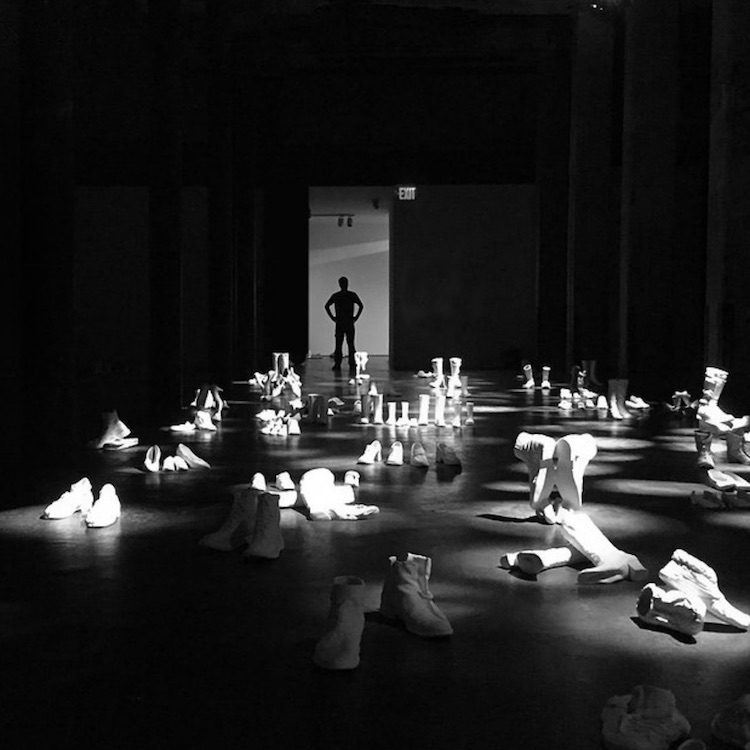NEW YORK—Reminiscent of the Holocaust, or as if stepping into a room moments after the Rapture, Ron Baron‘s Beyond-Beyond at Smack Mellon Gallery, which wrapped up earlier this month (September 23 – November 5, 2017), in elegant display, with dramatic lighting and high cathedral-like ceilings, are nearly a hundred ghostly white ceramic casts of shoes, boots and other footwear, artcritical writes.
On entering the space, the vibe is forbidding, but approaching closely one sees that each unglazed white sculpture is nuanced and inventive, even playful in a biting Surrealist way, as in weird meltings, slicings, piercings, and fetish-style nailings.
Baron’s approach, however, is simultaneously delicate lending each form “the quality of portraiture, so that a neatly sliced pair of loafers with baby shoes nestled inside becomes tenderly tragic.” One cannot help but think of the people who once wore them: Mothers, teachers, children.
Baron’s sculptures come from a place of loss: The artist had always used items found at vintage shops and yard sales, and an unnamed tragedy that profoundly affected his family caused the artist to see these castoffs in a different light, as evidence of forgotten lives.
Baron forces us to think about the various kinds of human relationships that give meaning to our lives, ArtForum writes.
Quoting Henry David Thoreau’s Walden: “Sometimes in a summer morning…I sat in my sunny doorway from sunrise till noon…in undisturbed solitude and stillness…I grew in those seasons like corn in the night.” Baron diverges from an obvious tune of isolation challenging himself and observers to grow in those quiet hours; that both spirit and creativity can flourish in seclusion.
That absence and presence are not necessarily in opposition but can complement and coexist with one another. Although something positive may grow from certain kinds of loss, one might doubt whether this is possible in the case of mourning the tragic death of a loved one. Yet, paradoxically, a void filled with lament can be fertile ground for creativity, since no matter how painful the bereavement process, the mind in mourning cannot help but dwell on the loss, and the artist must work from his experience.
Do you love or loathe this installation from the world of contemporary ceramic art and contemporary ceramics? Let us know in the comments!








Add your valued opinion to this post.